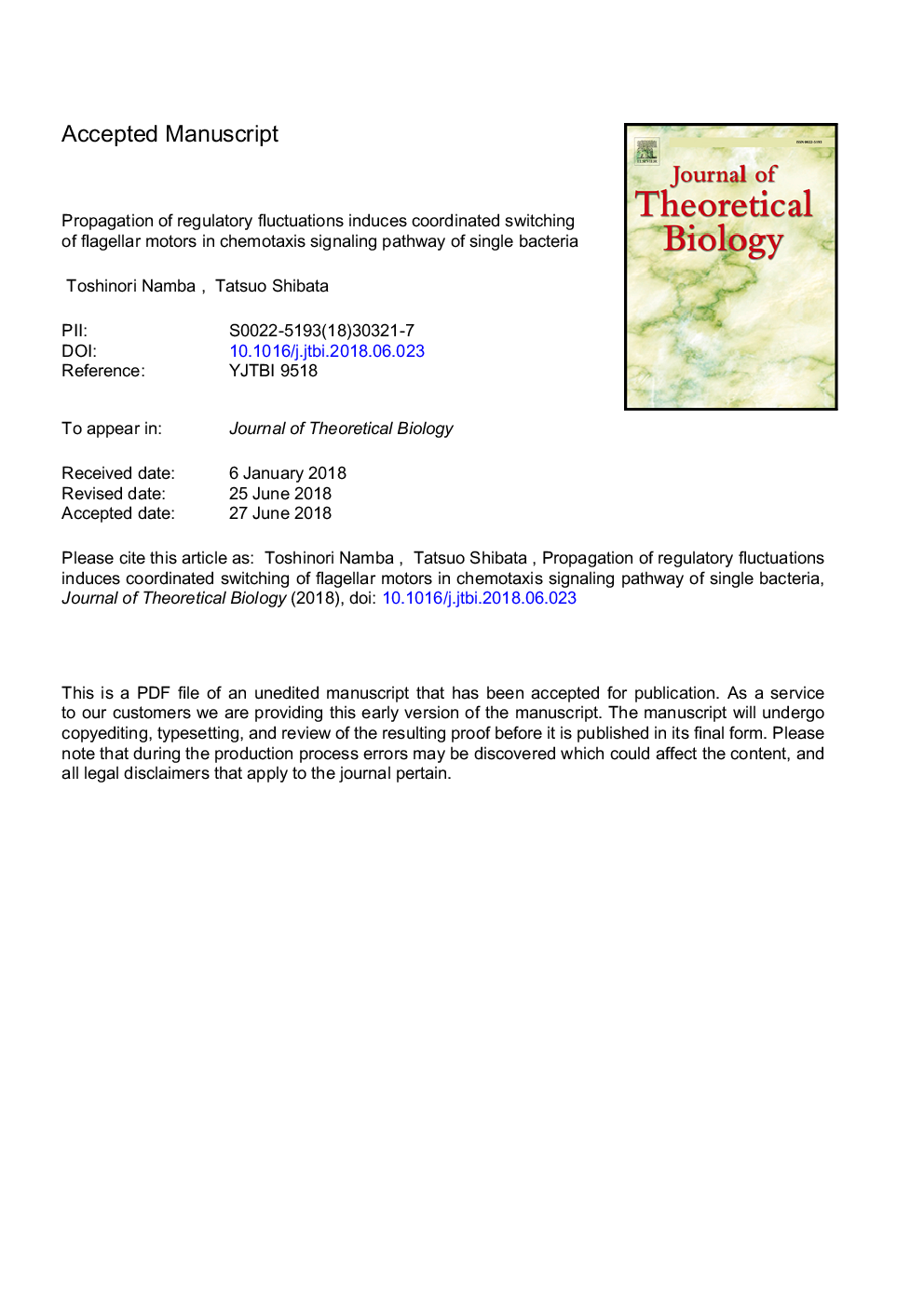| Article ID | Journal | Published Year | Pages | File Type |
|---|---|---|---|---|
| 8876590 | Journal of Theoretical Biology | 2018 | 22 Pages |
Abstract
The random motion of E. coli is driven by multiple flagella motors. When all motors rotate in the counter clockwise direction, the bacteria swims smoothly. A recent experimental report by Terasawa et al. [Biophys J,100,2193,(2011)] demonstrated that a coordination of the motors can occur through signaling pathways, and perturbation of a regulatory molecule disrupted the coordination. Here, we develop a mathematical model to show that a large temporal fluctuation in the regulator concentration can induce a correlated switching of the multiple motors. Such a large fluctuation is generated by a chemotaxis receptor cluster in unilateral cell pole, which then exhibits a spatial propagation through the cytoplasm from the receptor position to the motor around cell periphery. Our numerical simulation successfully reproduces synchronized switching and the lag time in the motions of two distant motors, which has been observed experimentally. We further show that the large fluctuation in the regulator concentration at the motor positions can expand the dynamic range that the motor can respond, which confers robustness to the signaling system.
Keywords
Related Topics
Life Sciences
Agricultural and Biological Sciences
Agricultural and Biological Sciences (General)
Authors
Toshinori Namba, Tatsuo Shibata,
